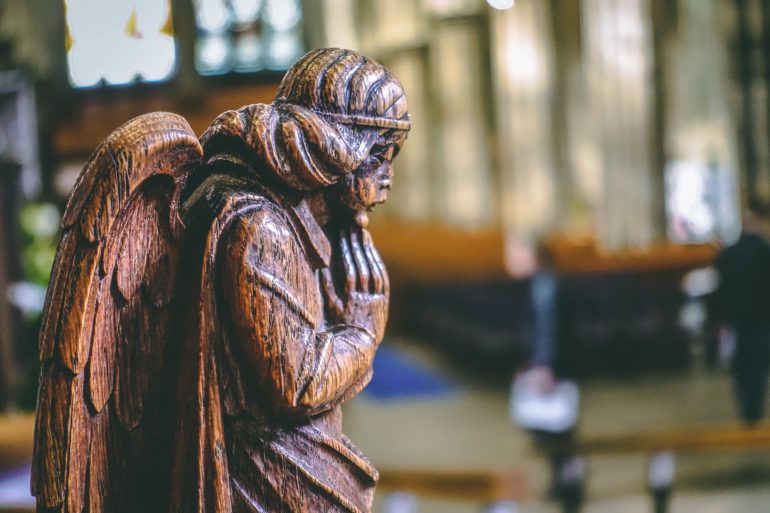Paisley’s earliest days are shrouded in myth and mystery. It all begins with the story of an Irish monk and missionary still commemorated in the town today.
Saint Mirin
Paisley’s patron saint was born in 565 (a contemporary of the more-famous Saint Columba of Iona).
Prior of Bangor Abbey in County Down, Northern Ireland, he is said to have travelled to the camp of the High King of Ireland to spread the Christian faith.
Refused entry to the camp by the king himself, Mirin prayed to God that the king might feel his wife’s labour pangs, her time being near. The king fell ill in pain for three days and nights and, to end his torment, granted Mirin and all he wished, including the right to go out and preach to the men of his camp.
Journeying as a missionary to Scotland, Mirin arrived where the town of Paisley now stands. Recently abandoned by the Romans, this land was in the possession of a powerful local chieftain who took a liking to Mirin and gave him a small field near the river in the southern part of town. This plot was called St Mirin’s Croft and, after his death, the shrine of Saint Mirin became a centre of pilgrimage.
In King James VI’s Charter of 1488, one of the reasons cited for Paisley’s rising status was “the singular respect we have for the glorious confessor, Saint Mirin”.
St Mirin’s image is engraved on the seal of Paisley Abbey. A chapel within the Abbey is dedicated to Mirin, containing a sculptured stone frieze depicting the life of the saint, and St Mirin’s Cathedral is also named in his honour.
Famously, the town’s professional football team is called St Mirren FC. The St Mirin Burn flows into the White Cart Water close to the town centre, and St Mirren Street links Paisley Cross to Causeyside Street.
The Cluniac monks of Paisley Abbey
Paisley Abbey was founded in 1163 when Walter Fitzalan, High Steward of Scotland, signed a charter for the founding of a Cluniac monastery on land he owned in Renfrewshire.
Thirteen monks travelled from Much Wenlock in Shropshire to set up the priory on the site of the old Celtic church founded by St Mirin in the 6th Century.
In 1245, the priory was raised to the status of abbey, answerable only to the Pope in Rome. The Abbey was dedicated to Saint Mary, Saint James, Saint Mirin and Saint Milburga (the ‘local’ saint of Wenlock).
The Whithorn Way
For over 1,500 years, the shrine of St Ninian on the Isle of Whithorn has been a centre for Christian pilgrimage. From the humblest religious man to famous monarchs Robert the Bruce and James IV, many have trodden the well-worn path to Whithorn.
The growing popularity of modern pilgrimage walking routes has inspired a revival of interest in recent years. The Glasgow-to-Whithorn walking route of 127 miles traces the medieval pilgrim route, noting abbeys and chapels which would have offered hospitality and opportunities to worship on the way.
The routes passes several places and sights of interest in Paisley and Renfrewshire:
- The site of Renfrew Castle
- The Argyll Stone and St Conval’s chariot
- St Mirin’s Cathedral
- Paisley Abbey and Barochan Cross
- Castle Semple Collegiate Church




